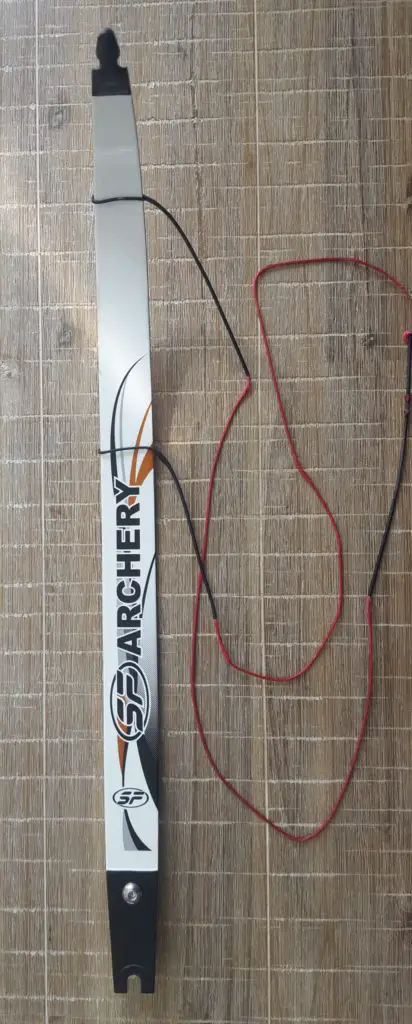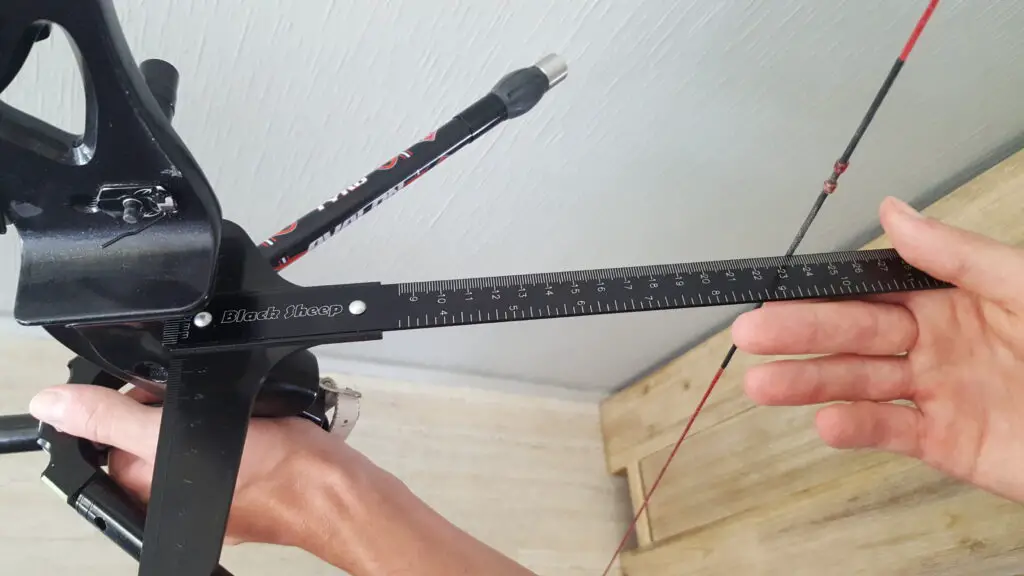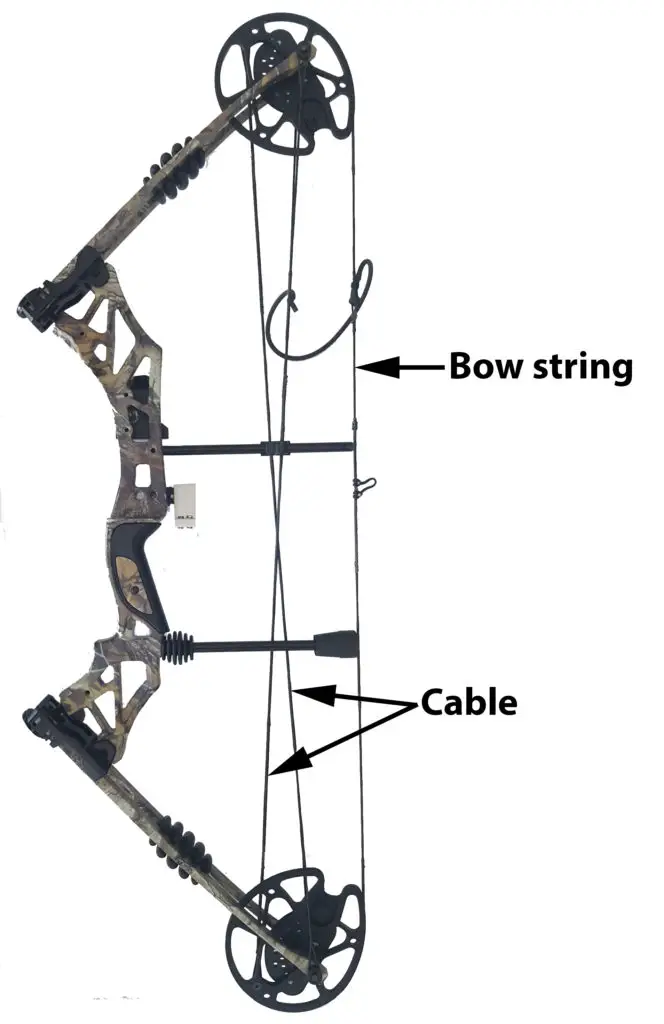The bowstring is a relatively simple part of the bow. When you are getting into archery many things about bowstrings are still unclear. For example: when should you replace the string, why does it stretch and how to keep it from untwisting? Therefore I will answer these questions in this article. If you want to skip to a certain answer you can use the menu next to this intro or below if you reading this article on a mobile device.
If you have any questions that I didn’t answer in this article, please let me know in the comment section down below. You will receive an email notification with your answer within a few days and I might even add the answer to this article.
So let’s get to the questions!
1. How to keep your bowstrings from fraying/getting fuzzy?
A bowstring may fray or get fuzzy because of three reasons: a lack of wax, abrasion, or aging. In most cases, a string gets fuzzy because of a lack of wax or aging. Abrasion issues are rarer but you should know that this can damage your bowstring. I had this issue a while ago. The lower part of my string was getting fuzzy because this part of the string touched my leg when I got ready to shoot. This won’t be an issue if it happens just once, but if it happens over and over again, the string will start to fray.
Most bowstrings will last a long time so if your bowstring isn’t that old the issue is probably a lack of wax or proper string care. You should make sure that you wax your string regularly and remove the old wax before you do so. Many archers forget to remove the old wax, which can severely reduce the lifespan of a string. Read this question, if you want to know how to maintain your string.
No string will last forever; some strings might last 20 years, while others only a few years. But one thing is certain; every string will eventually start to fray. Therefore, you shouldn’t be surprised that a well-used string needs replacing after a few years. Especially if it’s a cheap string, which is often shot in harsh conditions.

2. How to keep your bowstrings from untwisting?
As you probably know the number of twists in your bowstring determines the brace height. This is a very important measurement since it influences the tuning of the bow. Therefore, you should make sure that your bowstring doesn’t untwist when you are storing the bow.
This can, however, be quite a challenge, especially with new strings. Older strings often been waxed a lot and are less flexible. The amount of use and the waxing basically makes sure that the string retrains all its twists. This often happens when you use the string regularly for about 6 months.
If you have a newer string, you have to make sure that you store the string in a way that it doesn’t lose its twists. To make sure that your bowstring doesn’t get untwisted, you should slip both loops over one limb. This keeps the bowstring in place while you store your bow.

3. When should you replace the string?
This is a very difficult question; some archers replace the string once it gets really fuzzy. The idea behind this is that fuzzy strings will decrease the power output of the bow. Because the fuzzy parts of the string will provide more resistance with the air. Most archers agree, however, that this effect is really minor. Although it technically decreases the power output, you won’t notice it at all.
You only have to replace the string when one of the strands is severely damaged or completely loose. It doesn’t matter if your string gets fuzzy. You can either wax your string or leave it as is.
4. Why does my bowstring keep stretching?
Every time you bowstring stretches your brace height will decrease. Therefore, you will have to add twists to the string to solve the issue. You might, however, wonder if you can’t prevent your bowstring from stretching.
Every string stretches, Dacron strings especially can keep stretching. In most cases, the string will lose most of its stretchiness after 3 months. You can remove most stretch, by holding the string under tension for a while. You can do this for example by hanging a heavyweight on it.
You can also choose to buy a new string from less stretchy materials such as Spectra. I am currently using a fast flight string that is made of 100% spectra and I am really happy with its performance. Read the article down below, if you want more information about the different string materials available on the market.

5. What is the serving of the string and what is its purpose?
Serving is the wire that is wound around the loops of the string and the middle part of the string. Strings are quite vulnerable to abrasion; therefore the serving helps to protect the string. Serving wire is made from different materials that are more resistant to the abrasion and therefore significantly increase the lifespan of the string.
In most cases, the serving lasts longer than the string itself; but in some rare cases, you need to replace the serving. If your serving has come loose, you can easily fix it by following the instruction in this video.
6. What is the difference between a bowstring and a cable?
Compound bows have both a string and two cables. This might be confusing at first but it’s actually quite simple. If you have never closely looked at a compound bow, it might seem that there is just one string that loops 2 times, but there are actually 3 different pieces.
The bowstring is the part that is attached to the bowstring, runs over the main grove of the cam, and comes in direct contact with the arrow. The cables merely provide more stability to the entire bow and are located more closely to the riser. The cables also make sure that you can configure the draw length and make sure that you can’t draw further than a certain point.

7. What is the best bowstring?
In my experience, the only benefit of a more expensive string is that it stretches less. I found that cheap strings are often as durable (sometimes even more durable), than more expensive strings. Therefore, if you don’t mind a stretchy string, I would go for a cheap option. If you want a string that doesn’t stretch that much you will have to do some research on the materials of the string.
Although most expensive strings are made of materials that stretch less, this isn’t the case for all of them. Therefore, I wouldn’t decide purely on the price. Using reviews and experiences from other archers can be a huge help. I for example like the Fast Flight because it doesn’t stretch, almost at all. There are, however, many other great options available, but I haven’t yet used any other brand.

8. Do you really need wax for your string?
Yes, you should regularly wax your string when it becomes dry. Especially if you are shooting in a hot and dry climate the fibers may dry out and micro-cracks will start to form. When the bow is tensioned these micro-cracks may result in broken strands, which means that you have to completely replace the string. Therefore, the wax makes sure that you can use your string for a long time. A well-maintained string will last at least multiple years, while a neglected string only lasts a year.
The general rule is that you should wax your string every time the string gets fuzzy or feels dry. When you touch the string it should always feel a bit greasy. If your string gets older it might get fuzzy right after waxing. This doesn’t mean that you have to replace the string or have to apply another layer. You only have to be extra careful and make sure to wax it whenever it feels dry. When the string starts to show actual damage you should replace the string immediately. Otherwise, the string might snap during a shot which can cause major damage to your limbs.
9. Can you use Vaseline, Chapstick, Labello, or petroleum jelly as string wax?
One thing most archers forget to buy when they are just getting started is wax for the string. Therefore, you might wonder if there is a substitute for string wax. In general, I wouldn’t recommend waxing your string with anything else but string wax. Especially, products that contain petroleum jelly such as Vaseline, Chapstick, and Labello, are not a good substitute for
If you have no string wax and you really need another option, you might want to consider other waxes. Beeswax is often used by archers for example, but any real wax will do, such as hockey, surfboard, and ski wax. You can also use a candle, but it will be quite cumbersome since it has a higher melting point.
I would, however, stick to actual string wax. I don’t think you need expensive string wax, so the string costs more than a stick of wax. I have been into archery for at least 5 years now and I am not even halfway on my first stick. The wax will stay good for ages, so you will get a lot of use out of it.

10. How do you maintain a bowstring?
There are a ton of videos and blog articles on how you should maintain a bowstring. I believe, however, that most of these archers forget one critical step. You should always remove the old wax before you apply a new layer. When you are shooting dirt will start to collect in the wax. Since the string is sticky anything that is in the air may stick to the string. Even if you shoot indoors, your string will get dirty.
When you apply a new layer of wax there are often still some remains from the old layer. When this layer isn’t removed the new wax will have a hard time penetrating in the fibers. Therefore, you should always make sure that your remove the old wax. A simple way to do this is by using a thin string and running it down bowstring. The video below gives an excellent demonstration of how you should wax a bowstring. Although the video features a compound bow, the same applies to recurve and traditional bows.
Tim van Rooijen
For as long as I can remember, I have always been fascinated by archery. First due to its historic significance but later because I like being outdoors. With this blog, I share my knowledge about Archery and how you can improve your shot. More about author…

